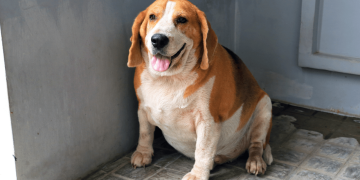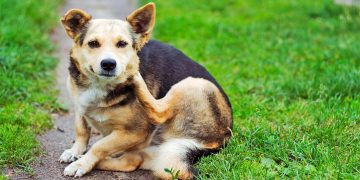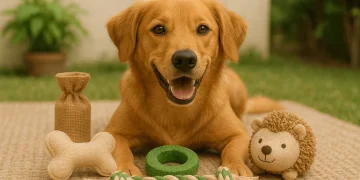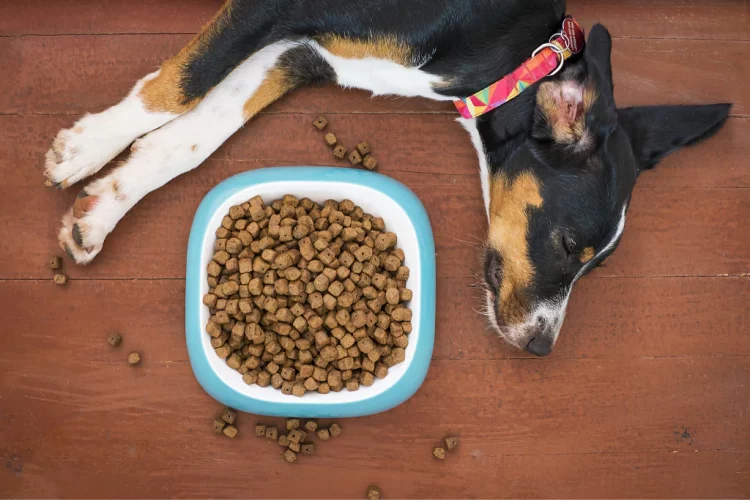When you stand in the pet food aisle, overwhelmed by dozens of bags and cans with colorful labels promising different benefits, it can be difficult to know which one is best for your pet. Whether you’re shopping for a dog, cat, or another pet, understanding what’s inside the food is key to providing them with the nutrients they need for a long, healthy life. Pet food labels are filled with terms and claims that can be confusing, but they hold valuable information that can guide your purchasing decisions. In this article, we’ll analyze key ingredients on pet food labels and explain their significance for your pet’s health and wellbeing.
The Importance of Pet Food Labels
Pet food labels serve as a guide to understanding the nutritional value of the product you’re purchasing for your pet. While they can be a useful tool, it’s essential to know what to look for and how to interpret the information presented. Labels typically include details such as the list of ingredients, nutritional content, guaranteed analysis, and feeding guidelines. The goal is to ensure that the food is providing your pet with the right balance of nutrients that match their specific life stage, health condition, and dietary needs.
The Basic Components of Pet Food Labels
Before diving into the key ingredients, it’s important to familiarize yourself with the overall structure of a pet food label. Pet food labels typically consist of the following components:
- Product Name: Often, the product name will include a primary ingredient, such as “Chicken and Rice,” but don’t be misled. The name alone doesn’t provide enough information to determine whether the food meets your pet’s needs.
- Guaranteed Analysis: This section provides information on the nutritional content of the food, including protein, fat, fiber, and moisture levels. It serves as a basic overview of the food’s nutritional profile.
- Ingredient List: The ingredients are listed in descending order by weight. The first few ingredients are crucial in determining the quality of the food.
- Feeding Guidelines: These are recommendations from the manufacturer for how much of the food your pet should consume based on their weight, age, and activity level.
- Additives and Preservatives: Some food labels include information about artificial colors, preservatives, and flavors that are added to the food.
Key Nutrients in Pet Food
The key nutrients found in pet food can be broken down into several categories. Understanding these nutrients is vital for ensuring your pet’s diet is well-rounded and appropriate for their health needs. Let’s take a closer look at the most important nutrients in pet food and what they contribute to your pet’s overall wellbeing.
1. Protein: The Building Block of Life
Protein is a critical nutrient for pets, especially for dogs and cats, which are both obligate carnivores (meaning they rely on animal-based proteins for optimal health). Protein helps build and repair tissues, supports the immune system, and contributes to healthy skin and coat. On pet food labels, protein sources can be listed as meat (chicken, turkey, beef), fish (salmon, tuna), or plant-based (soy, peas, lentils).
For dogs, the protein content should typically be 18-30% depending on their life stage and activity level. Cats require higher levels of protein, often 30-50%, because their bodies are designed to process protein more efficiently than dogs. The first few ingredients in a high-quality pet food should be animal-based proteins, as these provide the amino acids needed for optimal health.
2. Fats: Essential for Energy and Coat Health
Fats are another crucial nutrient in your pet’s diet. They provide a concentrated source of energy and are vital for maintaining healthy skin, a shiny coat, and absorbing fat-soluble vitamins such as vitamins A, D, E, and K. Additionally, essential fatty acids like omega-3 and omega-6 play a role in reducing inflammation and supporting brain health.
Common sources of fat in pet food include animal fats (chicken fat, fish oil), vegetable oils (canola oil, sunflower oil), and flaxseed. It’s important to ensure that the fats in your pet’s food come from high-quality, natural sources. Too much fat can lead to obesity, so it’s essential to strike the right balance for your pet’s needs.
3. Carbohydrates: Fuel for Active Pets
Carbohydrates provide pets with energy and are necessary for overall vitality. While cats and dogs don’t have a nutritional requirement for carbohydrates, they benefit from them as a secondary source of energy. Carbohydrates also provide fiber, which helps regulate digestion and promotes healthy bowel movements.
Common carbohydrate sources in pet food include grains like rice, barley, and oats, as well as starchy vegetables such as sweet potatoes and peas. Whole grains are typically preferred over refined grains, as they contain more fiber and are more easily digested. However, some pets may have sensitivities or allergies to grains, so grain-free options are available for pets with these issues.
4. Fiber: Digestive Health Support
Fiber is an essential part of your pet’s diet, as it helps with digestion, regulates bowel movements, and prevents constipation. It also supports healthy gut bacteria, which is crucial for maintaining overall digestive health. Fiber is especially important for pets prone to gastrointestinal issues or those on weight management plans.
Sources of fiber include vegetables, fruits, and whole grains like oats. Some pet foods may include additional fiber sources such as beet pulp or psyllium husk to ensure proper digestion.
5. Vitamins and Minerals: Supporting Vital Functions
Vitamins and minerals are micronutrients that are necessary for various bodily functions, from maintaining bone health to supporting the immune system. Pet food labels often list these nutrients under “supplemental vitamins and minerals,” and the most commonly included ones are:
- Vitamin A: Supports vision, immune function, and skin health.
- Vitamin D: Essential for calcium absorption and bone health.
- Vitamin E: Acts as an antioxidant and helps protect cells from damage.
- Calcium and Phosphorus: Vital for bone health and muscle function.
- Iron: Necessary for oxygen transport in the blood.
High-quality pet food will include appropriate levels of these vitamins and minerals, ensuring that your pet receives the right balance to support their growth, health, and vitality.
6. Water: Vital for Hydration
Water is the most important nutrient for any living being, including pets. While water is not typically listed on the label in dry food (since it’s not present in dry kibble), it is a crucial component of canned or wet pet food. Water is necessary for digestion, nutrient absorption, and temperature regulation. Make sure that your pet always has access to fresh, clean water to stay properly hydrated.

Special Considerations for Pets with Specific Health Needs
Not all pets are the same, and some have unique dietary needs due to health conditions, age, or activity level. Pet food manufacturers often create formulas tailored to these specific needs. Here are some examples:
1. Puppy and Kitten Food
Puppies and kittens have higher energy needs and require more protein and fat than adult pets to support growth and development. Their food should be rich in DHA, an omega-3 fatty acid that supports brain development.
2. Senior Pet Food
As pets age, their metabolism slows, and they may require fewer calories but more joint support, fiber, and digestive aids. Senior formulas often include ingredients like glucosamine and chondroitin to support joint health, as well as more easily digestible proteins.
3. Food for Allergies and Sensitivities
Some pets are prone to food allergies, which can result in digestive upset, skin issues, and ear infections. In these cases, foods with limited ingredients, hypoallergenic formulations, or novel protein sources like duck or venison can help reduce the risk of an allergic reaction.
4. Weight Management Formulas
Pets prone to obesity benefit from weight management formulas that typically contain higher fiber levels and lower fat content. These formulas help your pet feel full while still managing calorie intake.
How to Choose the Right Pet Food for Your Pet
Choosing the right pet food is an individualized process, as each pet’s nutritional needs differ based on their breed, age, health, and activity level. To select the best food for your pet, consider the following:
- Read the Label Carefully: Understand the first few ingredients and the guaranteed analysis to ensure it matches your pet’s nutritional needs.
- Consult with a Veterinarian: For pets with special dietary needs or health concerns, consult your veterinarian for personalized recommendations.
- Choose High-Quality Brands: Opt for brands with a reputation for high-quality ingredients and transparency in their ingredient sourcing and manufacturing processes.
- Monitor Your Pet’s Health: Regularly assess your pet’s weight, coat condition, energy levels, and overall health to determine if their food is meeting their needs.
Conclusion
Understanding pet food labels is crucial for making informed decisions about your pet’s diet. Key ingredients like protein, fat, carbohydrates, fiber, vitamins, and minerals all contribute to your pet’s overall health and wellbeing. By paying attention to the nutritional content, ingredient list, and special considerations for your pet’s life stage or health needs, you can select the best food to support their long-term health. Always remember that every pet is unique, and their dietary needs may change as they age or experience health conditions. Armed with knowledge and guidance from your veterinarian, you can ensure that your pet enjoys a happy, healthy life.























































